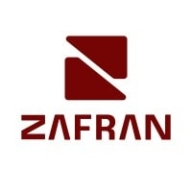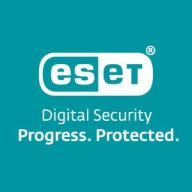


ESET Cloud Apps Protection and SentinelOne Singularity Identity are competing cybersecurity solutions in the identity and cloud app protection sector. ESET Cloud Apps Protection is noted for its cost-effectiveness and ease of use, while SentinelOne Singularity Identity provides advanced identity protection features catering to users with specific identity-focused security needs.
Features: ESET Cloud Apps Protection offers robust threat detection, seamless email integration, and comprehensive cloud apps management. SentinelOne Singularity Identity excels with comprehensive identity threat detection, AI-driven insights, and sophisticated integration capabilities, focusing on identity protection.
Room for Improvement: ESET Cloud Apps Protection could enhance its identity-focused features, expand AI-driven insight capabilities, and support more advanced integrations. SentinelOne Singularity Identity could improve ease of deployment, offer more budget-friendly pricing, and streamline the integration process to accommodate various user needs.
Ease of Deployment and Customer Service: ESET Cloud Apps Protection is recognized for its straightforward deployment, beneficial to organizations seeking quick setup, along with responsive customer service. SentinelOne Singularity Identity requires a more involved deployment due to advanced configurations but offers dedicated support channels to help with integration.
Pricing and ROI: ESET Cloud Apps Protection is appealing for budget-conscious organizations with its lower setup cost and immediate value return. SentinelOne Singularity Identity demands a higher initial investment but promises long-term ROI through advanced identity protection features.


Zafran Security integrates with existing security tools to identify and mitigate vulnerabilities effectively, proving that most critical vulnerabilities are not exploitable, optimizing threat management.
Zafran Security introduces an innovative operating model for managing security threats and vulnerabilities. By leveraging the threat exposure management platform, it pinpoints and prioritizes exploitable vulnerabilities, reducing risk through immediate remediation. This platform enhances your hybrid cloud security by normalizing vulnerability signals and integrating specific IT context data, such as CVE runtime presence and internet asset reachability, into its analysis. No longer reliant on patch windows, Zafran Security allows you to manage risks actively.
What are the key features of Zafran Security?
What benefits can users expect from Zafran Security?
In industries where security is paramount, such as finance and healthcare, Zafran Security provides invaluable protection by ensuring that only exploitable vulnerabilities are addressed. It allows entities to maintain robust security measures while allocating resources efficiently, fitting seamlessly into existing security strategies.
ESET PROTECT Complete offers a complete multilayered protection for endpoints, cloud applications & email, the #1 threat vector.
ESET PROTECT Complete is the ultimate cybersecurity solution that offers top-tier endpoint protection against ransomware and zero-day threats, backed by robust data security measures. It employs a sophisticated multilayered approach that combines multiple cutting-edge technologies to strike the perfect balance between performance optimization, threat detection, and minimizing false positives. With automated malware removal and mediation, it ensures uninterrupted business operations by providing advanced protection for data across general servers, network file storage including OneDrive, and multi-purpose servers. This comprehensive package also features powerful native encryption, enhancing data security to meet stringent compliance regulations.
Singularity Identity, a component of the Singularity platform, provides threat detection & response (ITDR) capabilities to defend Active Directory and domain-joined endpoints in real-time from adversaries aiming to gain persistent, elevated privilege and move covertly. Singularity Identity provides actionable, high-fidelity insight as attacks emerge from managed and unmanaged devices. It detects identity misuse and reconnaissance activity happening within endpoint processes targeting critical domain servers, service accounts, local credentials, local data, network data, and cloud data. On-agent cloaking and deception techniques slow the adversary down while providing situational awareness and halting adversarial attempts at lateral movement. Singularity Identity helps you detect and respond to identity-based attacks, providing early warning while misdirecting them away from production assets.
Singularity Identity’s primary use case is to protect credential data and disrupt identity-based attacks. The most valuable function of Singularity Identity is its ability to misdirect attackers by providing deceptive data to identity-based recon attacks. Additionally, it can hide and deny access to locally stored credentials or identity data on Active Directory domain controllers.
Singularity Identity also provides rapid detection and respond to identity attacks, capturing attack activity and feeding it directly to the Singularity platform’s Security DataLake for enterprise-wide analysis and response.
By implementing Singularity Identity, organizations benefit from enhanced security, reduced credential-related risks, and improved user productivity. It detects and responds to identity-based attacks, ensuring only authorized individuals can access critical identity data. With its cloaking capabilities to hide identity stored locally on endpoints or in the identity infrastructure and it’s ability to provide decoy results to identity-based attacks, organizations can effectively secure their sensitive or privileged identities, resulting in improved overall identity security.
We monitor all Vulnerability Management reviews to prevent fraudulent reviews and keep review quality high. We do not post reviews by company employees or direct competitors. We validate each review for authenticity via cross-reference with LinkedIn, and personal follow-up with the reviewer when necessary.